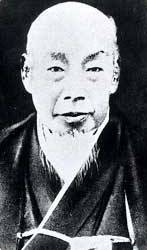
Computer memory stores information, such as data and programs, for immediate use in the computer. The term memory is often synonymous with the terms RAM,main memory, or primary storage. Archaic synonyms for main memory include core and store.

Toshiba Corporation is a Japanese multinational electronics company headquartered in Minato, Tokyo. Its diversified products and services include power, industrial and social infrastructure systems, elevators and escalators, electronic components, semiconductors, hard disk drives (HDD), printers, batteries, lighting, as well as IT solutions such as quantum cryptography which has been in development at Cambridge Research Laboratory, Toshiba Europe, located in the United Kingdom, now being commercialised. It was one of the biggest manufacturers of personal computers, consumer electronics, home appliances, and medical equipment. As a semiconductor company and the inventor of flash memory, Toshiba had been one of the top 10 in the chip industry until its flash memory unit was spun off as Toshiba Memory, later Kioxia, in the late 2010s.
Japanese studies or Japan studies, sometimes known as Japanology in Europe, is a sub-field of area studies or East Asian studies involved in social sciences and humanities research on Japan. It incorporates fields such as the study of Japanese language, history, culture, literature, philosophy, art, music, cinema, and science.
Semiconductor memory is a digital electronic semiconductor device used for digital data storage, such as computer memory. It typically refers to devices in which data is stored within metal–oxide–semiconductor (MOS) memory cells on a silicon integrated circuit memory chip. There are numerous different types using different semiconductor technologies. The two main types of random-access memory (RAM) are static RAM (SRAM), which uses several transistors per memory cell, and dynamic RAM (DRAM), which uses a transistor and a MOS capacitor per cell. Non-volatile memory uses floating-gate memory cells, which consist of a single floating-gate transistor per cell.

EMI Music Japan Inc., formerly Toshiba EMI, was one of Japan's leading music companies. It became a wholly owned subsidiary of British music company EMI Group Ltd. on June 30, 2007, after Toshiba sold off its previous 45% stake. Its CEO and president was Kazuhiko Koike. When EMI Music Japan was trading as Toshiba-EMI, it was involved with the production of anime. On April 1, 2013, the company became defunct, following its absorption into Universal Music Japan as a sublabel under the name EMI Records Japan.

Hisashige Tanaka was a Japanese businessman, inventor, mechanical engineer, and rangaku scholar who was prominent during the Bakumatsu and early Meiji period in Japan. In 1875, he founded what became the Toshiba Corporation. He has been called the "Thomas Edison of Japan" or "Karakuri Giemon."

The National Museum of Nature and Science is in the northeast corner of Ueno Park in Tokyo. The museum has exhibitions on pre-Meiji science in Japan. It is the venue of the taxidermied bodies of the legendary dogs Hachikō and Taro and Jiro. A life-size blue whale model and a steam locomotive are also on display outside.

The Satellite Pro is a line of laptop computers designed and manufactured by Dynabook Inc. of Japan, which was formerly Toshiba's computer subsidiary. The Satellite Pro is currently positioned between their consumer E series and their business Tecra series of products.

The Toshiba T1100 is a laptop manufactured by Toshiba in 1985, and has subsequently been described by Toshiba as "the world's first mass-market laptop computer". Its technical specifications were comparable to the original IBM PC desktop, using floppy disks, a 4.77 MHz Intel 80C88 CPU, 256 KB of conventional RAM extendable to 512 KB, and a monochrome LCD capable of displaying 80x25 text and 640x200 CGA graphics. Its original price was $1899 USD.

The Toshiba T1200 is a discontinued laptop that was manufactured by the Toshiba Corporation, first made in 1987. It is an upgraded version of the Toshiba T1100 Plus.

Fujio Masuoka is a Japanese engineer, who has worked for Toshiba and Tohoku University, and is currently chief technical officer (CTO) of Unisantis Electronics. He is best known as the inventor of flash memory, including the development of both the NOR flash and NAND flash types in the 1980s. He also invented the first gate-all-around (GAA) MOSFET (GAAFET) transistor, an early non-planar 3D transistor, in 1988.
Sord Computer Corporation is a Japanese electronics company, founded in 1970 by the entrepreneur Takayoshi Shiina.

The Toshiba T3100 is a discontinued portable PC manufactured by Toshiba released in 1986. It features a 10 MB hard drive, 8 MHz Intel 80286 CPU and a black & orange 9.5" gas-plasma display with a resolution of 640 × 400 pixels.
Statistics of Emperor's Cup in the 1990 season.

Toshiba Pasopia 7 is a computer from manufacturer Toshiba, released in 1983 and only available in Japan, with a price of $1350.

The memory cell is the fundamental building block of computer memory. The memory cell is an electronic circuit that stores one bit of binary information and it must be set to store a logic 1 and reset to store a logic 0. Its value is maintained/stored until it is changed by the set/reset process. The value in the memory cell can be accessed by reading it.

Toshiba Pasopia is a computer from manufacturer Toshiba, released in 1981 and based around a Zilog Z80 microprocessor. This is not to be confused with the Toshiba Pasopia IQ, a similar named line of MSX compatible computers.
Toshiba Pasopia 16 or PA7020 is an IBM PC compatible computer from manufacturer Toshiba, released in 1982 and based around a Intel 8088-2 microprocessor running at 6 MHz.

The Toshiba Pasopia IQ are a series of MSX compatible machines released by Toshiba between 1983 and 1985. This is not to be confused with a different computer line with the similar name of Toshiba Pasopia.
The Satellite P series was Toshiba Information Systems's secondary premium line of Satellite laptops introduced in 2003. It later eclipsed Toshiba's primary premium line of Satellites, the A series, in 2011.













